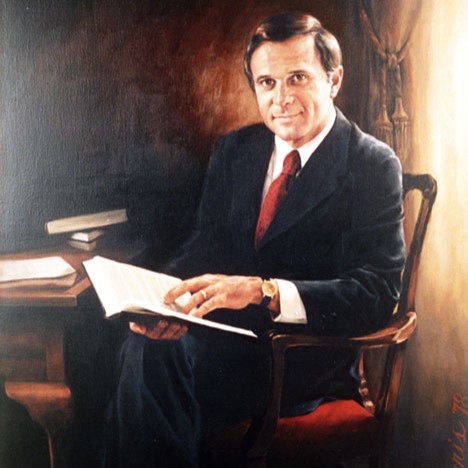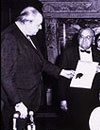This website uses cookies so that we can provide you with the best user experience possible. Cookie information is stored in your browser and performs functions such as recognizing you when you return to our website and helping our team to understand which sections of the website you find most interesting and useful. Please see our privacy policy for more information.
Arkansas
Gov. George W. Donaghey
- January 14, 1909 - January 15, 1913
- Democrat
- July 1, 1856
- December 15, 1937
- Louisiana
- Arkansas Industrial University
- Married Louvenia Wallace
About
GEORGE W. DONAGHEY, Arkansas’s 22nd governor, was born in Oakland, Union Parish, Louisiana, on July 1, 1856. He attended Arkansas Industrial University (now the University of Arkansas) from 1882 to 1883. He taught school, was a carpenter, and studied architecture and structural engineering, becoming proficient in both. Donaghey was a successful contractor who constructed courthouses in Arkansas and Texas; built ice plants and roads in Arkansas; and erected railroad stations and water tanks for the Choctaw, Oklahoma, and Gulf Railroads. In 1908, Donaghey was elected to the governor’s office, and in 1910, was reelected to a second term. When Donaghey was elected, the Arkansas State Capitol was in the process of being built, but had many problems.. Donaghey lead efforts pushing for the completion of the new State Capitol by hiring nationally known architect Cass Gilbert and by appointing a non-political state capitol commission consisting of bankers and architects to supervise the construction. The state government moved into the new Capitol in 1911.
During his tenure, Donaghey strove to improve public health, education, roads, and railways. The Booneville T.B. Sanitarium was created, as well as four agricultural high schools that later developed into Arkansas Tech, Arkansas State, Southern State, and the University of Arkansas at Monticello. One of his greatest achievements was the termination of the convict-lease system. Donaghey accomplished this by pardoning 360 inmates, 36 percent of the penitentiary population, thus ruining the value of the leases. After leaving office on January 15, 1913, Donaghey served as president of the Board of Control of State Charitable Institutions from 1922 to 1926, and chaired Governor McRae’s 1921 Education Commission. He also chaired boards that were responsible for constructing two bridges across the Arkansas River. Governor George W. Donaghey died in Little Rock, on December 15, 1937, and is buried at the Roselawn Memorial Park Cemetery, Little Rock, Arkansas.
Source
Sobel, Robert, and John Raimo, eds. Biographical Directory of the Governors of the United States, 1789-1978, Vol. 1, Westport, Conn.; Meckler Books, 1978. 4 vols.
Donovan, Timothy P., and Willard B. Gatewood, Jr., The Governors of Arkansas, Essays in Political Biography, Fayetteville; The University of Arkansas Press, 1981
Herndon, Dallas, T., Centennial History of Arkansas, Vol. 1, Chicago, Little Rock; The S.J. Publishing Co., 1922. 3 vols.
Old State House Museum












